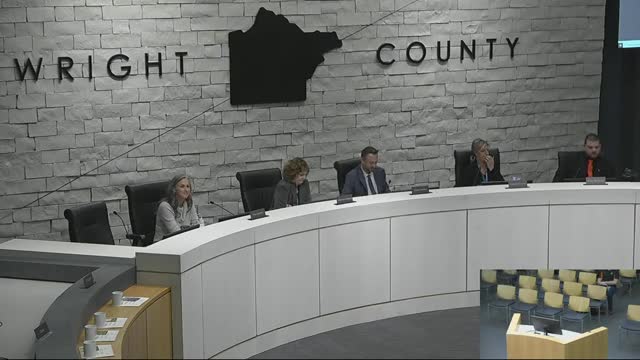Wright County updates Pelican Lake management plan to restore historic water levels
March 05, 2025 | Wright County, Minnesota
This article was created by AI summarizing key points discussed. AI makes mistakes, so for full details and context, please refer to the video of the full meeting. Please report any errors so we can fix them. Report an error »

The Wright County Board meeting on March 4, 2025, featured a significant update on the Pelican Lake management plan, presented by Peter Borrash. The discussion highlighted the lake's historical significance and ongoing management efforts aimed at restoring its ecological balance.
Pelican Lake, a large shallow lake covering 3,800 acres, has been a vital habitat for migratory birds. However, since the 1970s, the lake's water levels have risen dramatically, primarily due to agricultural drainage practices, leading to concerns about water quality and land use. The lake's depth, which is typically less than 15 feet, has made it particularly susceptible to ecological changes, including the proliferation of rough fish that disrupt the natural food chain.
Borrash outlined the management strategies implemented over the past several decades, including strategic land acquisitions to protect the shoreline and runoff areas. Currently, approximately 2,000 acres of land surrounding the lake are protected, with half to two-thirds of the shoreline secured from development.
The management plan has involved a gradual drawdown of the lake to restore it to its historic levels. This process began in 2014, utilizing gravity drainage and pumps to lower water levels effectively. As of the fall of 2024, the lake was at the desired outlet management level, with expectations for seasonal fluctuations due to rainfall.
Borrash emphasized the importance of public involvement in the management process, noting that Wright County has played a unique role in spearheading land acquisitions for conservation. The ongoing efforts aim to ensure Pelican Lake remains a productive ecosystem for wildlife while balancing the needs of surrounding communities.
The meeting concluded with a reaffirmation of the commitment to maintaining Pelican Lake's health and ecological integrity, highlighting the collaborative efforts between local government, conservation agencies, and the public.
Pelican Lake, a large shallow lake covering 3,800 acres, has been a vital habitat for migratory birds. However, since the 1970s, the lake's water levels have risen dramatically, primarily due to agricultural drainage practices, leading to concerns about water quality and land use. The lake's depth, which is typically less than 15 feet, has made it particularly susceptible to ecological changes, including the proliferation of rough fish that disrupt the natural food chain.
Borrash outlined the management strategies implemented over the past several decades, including strategic land acquisitions to protect the shoreline and runoff areas. Currently, approximately 2,000 acres of land surrounding the lake are protected, with half to two-thirds of the shoreline secured from development.
The management plan has involved a gradual drawdown of the lake to restore it to its historic levels. This process began in 2014, utilizing gravity drainage and pumps to lower water levels effectively. As of the fall of 2024, the lake was at the desired outlet management level, with expectations for seasonal fluctuations due to rainfall.
Borrash emphasized the importance of public involvement in the management process, noting that Wright County has played a unique role in spearheading land acquisitions for conservation. The ongoing efforts aim to ensure Pelican Lake remains a productive ecosystem for wildlife while balancing the needs of surrounding communities.
The meeting concluded with a reaffirmation of the commitment to maintaining Pelican Lake's health and ecological integrity, highlighting the collaborative efforts between local government, conservation agencies, and the public.
View full meeting
This article is based on a recent meeting—watch the full video and explore the complete transcript for deeper insights into the discussion.
View full meeting
